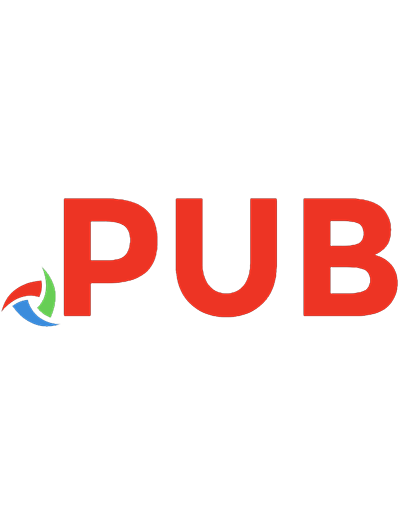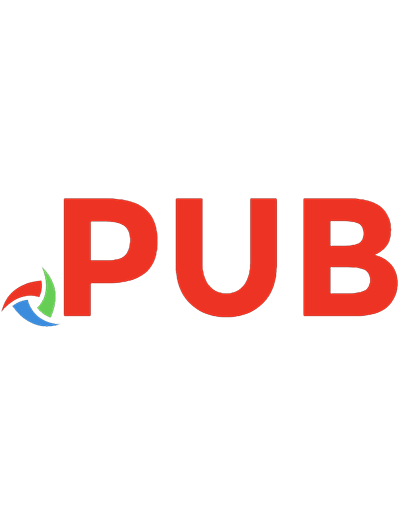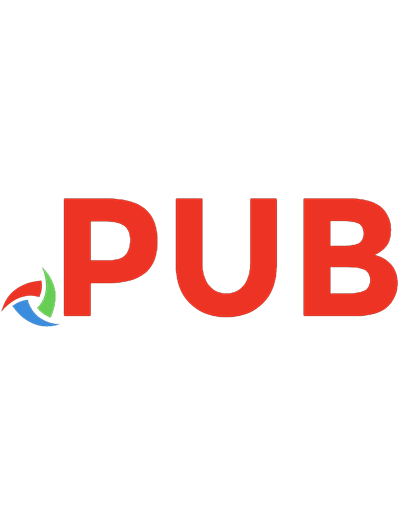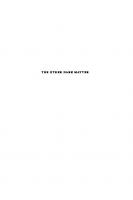The Collectors of Lost Souls: Turning Kuru Scientists Into Whitemen 9780801890406, 2019010986, 9781421433608, 1421433605, 9781421433615
This riveting account of medical detective work traces the story of kuru, a fatal brain disease, and the pioneering scie
114 103 81MB
English Pages 336 [352] Year 2008
Polecaj historie
Table of contents :
Title Page
Copyright
Contents
Preface to the Updated Edition
Introduction The Disease Europeans Catch from Kuru
Chapter 1 Stranger Relations
Chapter 2 Portrait of the Scientist as a Young Man
Chapter 3 A Contemptuous Tenderness
Chapter 4 The Scientist and His Magic
Chapter 5 Hearts of Darkness
Chapter 6 Specimen Days
Chapter 7 We Were Their People
Chapter 8 Stumbling Along the Tortuous Road
Conclusion Denouement Was a Bit Difficult
Afterward
Acknowledgments
Abbreviations
Notes
Bibliography
Index
Citation preview
Praise for the First Edition
Winner, William H. Welch Medal, American Association
for the
History
of Medicine
Winner, Ludwik Fleck
Prize, Society for the Social Studies of Science
Winner, General History Award,
New South
Wales Premier’s History
Awards “lA| magisterial account... Anderson’s compelling study captures the texture of twentieth-century medical fieldwork the social dynamics
The
and
ethical realities
and provides insight into
of globalized science and medicine.
Collectors of Lost Souls persuades us that these things really
happened
and shows us why theymatter.” —Sczence
“Very
much about possession, The
sessed by everyone and craft
of history at
“Who
its
its
powers
Collectors of Lost Souls should
be pos-
to possess let loose. ‘This is the witch-
best.” —Iszs
should read Collectors? Many. ‘Transactions and translations; issues
of obligation and engagement; of power, respect and autonomy arise regularly
and
in
many
contexts, not only in development settings. Under-
graduate students will be struck by the dependence of the high-tech of con-
temporary science on fragile personal relationships. Apprentice historians can learn much from Anderson’s narration of a story where the voices are
many and
the issues grave. Especially in relation to Gaydusek,
stance exemplary.
He is chronicler,
I
find his
not biographer; he avoids the tempta-
tion to interpret, speak for, reduce to, explain away;
he accords Gajdusek
both the majesty of his achievement and the dignity of his tragedy.” —British fournal for the History of Science
“In his riveting description of the exchanges and misunderstandings that constituted the search for kuru,
Anderson has created
that rare thing:
academic page-turner.”— Fournal of the Royal Anthropological
“For a lay reader
it is
changed so profoundly. Too
fast,
in
some
up and understand that it was no longer the world—and its people—as an open adventure park for
instances, for researchers to catch
scientific
Institute
an extraordinarily rich story about how, in the twenti-
eth century, the idea of otherness
acceptable to see
an
The Australian exploration.” —
“This
is
not a textbook; the
scientific, sociological
counts are readily available elsewhere.
It is
or administrative ac-
a saga of proportions seen before
and the Whale, or the magical mystery of Joseph Conrad’s Heart of Darkness. Yet the kuru story is true and this book about
in tales such as Jonah
it
demands
to
be read from the beginning
New Zealand fournal
to the end.”
—Australan and
of Public Health
“Distinguished by captivating storytelling and a historiographically rigorous account of the events. Lost Souls interested layman, but
ofa remarkable
it
also provides a
scientific
is
not only enjoyable for any
thoroughly researched account
adventure that spans four decades.” —Nature
Neuroscrence
“Anderson has masterfully captured the complex, exotic and often extraordinary nature of this inquiry and the idiosyncrasies of a key scientist
This
is
“Warwick Anderson
in
The
.
.
Collectors of Lost Souls offers his readers a
profound and historically-nuanced account of kuru
modernity.”—Historical Records of Australian ““Anderson’s
book
1s
the study of science
a valuable
as a force in shaping
Scrence
and sometimes provocative contribution
and medicine
in colonial
researchers
research subjects have changed in the past 50 years.
bioethics has constructed
welcome
to
and post-colonial contexts.
He shows how the relationships between scientific ‘tribal’
.
a significant book.” —Oceanta
and
their
Modern
limits to research activities in this re-
gard, but these limits are often defined purely from the perspective of the
western world. Anderson gives an eloquent voice to other concepts and
shows the
that truly global bioethics
still
many
challenges.” —Bulletin of
World Health Organization
“Especially valuable to the field for ity
face
what
it
demonstrates about the possibil-
of writing a compelling narrative about postcolonial and postmodern
complexity in a way that is both straightforward and engaging. It should be read as a venerable model for how to bring the insights of science studies to a broader audience.”—Pauline Kusiak, East Asian Sctence, Technology Society
and
“A
strikingly original
lously researched,
and exciting work, imaginatively conceived, meticu-
and powerfully argued.
deserves to be widely read.”
It
—Social History of Medicine
“An outstanding book
that
tory of medical science. the triumph,
is
anyone interested in the hishelp place in perspective the broad influence,
must reading
It will
for
and the ultimate tragedy of the
life
of Nobel Laureate
D. Carleton Gajdusek.”— fournal of Child Neurology
“Heavily inflected by anthropological method and narrative
Anderson’s account of Gajdusek’s career
is
captivating.
style,
This master
historian of medicine has taken his expertise into the field with great
success.” —fournal of the History of Behavioral Sciences
“Hssential reading for those concerned with science studies
and biomedical
ethics.”—Annals of Science
“An
excellent,
even superb, volume, which combines great scholarly vigor
with a well-told story on a fascinating and important topic.
A highly ‘teach-
anyone studying the Pacific who is interested in learning more about kuru and/or the history of medicine.” able’
book,
it
will also
be of interest
to
—Bulletin of the Pacific Circle
“Far from offering a rational, detached, absolute
world of objects and people, larly scientific
appetites
exchange—is
as shot through with venality, avarice, outsized
and multi-layered
negotiating the thin line
the
Anderson’s treatment scilence—and particu-
and complicated entanglements
his meticulous
—JEEE
in
way of approaching
between
study,
as other
human
interactions. In
Anderson does an excellent job of
titillating details
and scholarly
analysis.”
Technology and Society Magazine
“How kuru came
to the attention of
Western
wick Anderson’s stunning [book] describes. to rermagine the
scientists is the story that [It]
deliberately forces readers
meaning of scientific discovery, colonialism, and
situates its global narrative
around sources found
in archives in
Guinea, Australia, and the United States and further develops oral histories delivered
by
scientists, anthropologists,
— Fournal of the History of the Neurosciences
War-
sorcery,
Papua it
New
through
and the Fore people.”
“An exemplary account of the discovery of the causes of a disease... a work of great theoretical insight.”— fournal of the History ofMedicine “This
is
a big story with sex, cannibalism, revolutionary scientific discover-
of unknown infectious proteins and
some of the world’s most headlinecatching diseases—kuru, scrapie, CJD and BSE. The larger-than-life central character of this exotic soap opera, Nobel Prize winner Carleton
ies
Gajdusek, died in December
last
year [2008].”—Arena Magazine
“This marvelous book deliberately forces us sojourn, scientific discovery, colonialism,
to re-imagine the
and sorcery, while
meaning of
at the
same
time providing us with an account of the discovery of Kuru, a lethal neurological disease,
—The Neuro “This book
and the science
determined
its
etiology.”
Times
is
great fun to read,
and ends with an enigmatic also
that ultimately
is
worth exploring
for
its
footnotes as well,
literary twist that is aesthetically pleasing
but
worth an anthropological recontextualizing.”—Michael M. J. Fischer,
East Asian Scrence, Technology and Society
“This book scientists,
is
a fascinating read of interest to
all
historians
and draws on Anderson’s wide ranging
of medicine in a colonial context.”—Health
and (hopefully)
interests in the practice
and History
THE COLLECTORS OF LOST SOULS
i
ee a Ss oe Oe Ce a os oe esee ee ee Be ee a a — Se ee A oe Oo CeoOao( — Ee SS. — © a. es kr . Oe a ee oN >. a — oe — Se a e : BEE eee ee Acs
a
ee ee re ee ee Ree ee Beoe BOR A . Oe es Re . Ue SSUES OE SR dey
.
tdi
ee
ae
eee
e
RUGSEID
EU ES
hisiatesMi
Rea
ee EeRES
ee a ESS
Se
oe Be
me ee
ER CEE Se aa
‘
“
oo
eer Jd
pei ee Pees a UME oases BOE oe gene oe ESE eS ess
ARASH
Be
ee
Ce
Foie
aos
eee
Neh
es ey Sgt Sa SRE as aay RESO SR SP Sana ean
Re
ie
OEE Peed See
seeeee
eae
Se
SE
Sag
suc
See
nace ee SELg ee SU
E SECS ES ha
eet
oe ce
es
RS
a Es
EEE
hm
ow
CESS
eee
he “ag
ed
NER
Ce BoP ee 2
Esa
ees
.
ESS ee Eee eo eg Be
Be
US
BORE
ee
ANGRY
Stn
wires
tu
Se
Se
Sooke
See
noes
te
emer
ee
OEE
OSU as eSeee lr PRES eke EOERe OE POSES BE ese Ae ante Sepevind EA SEES i Ie Je DEER Sih RS See kee CEN ee Se Eee sich Pe SSNS ee ERR ENS SESE a BO OO LhLrrrrlr—C ee el SSE Siar
esSSa eee Sg wee aesEOS ORL ea eeees
PS enor Ee gee BPE ees cg as SES REO pig eea BESS NEES ees SEES see, MaeORs ES SUPE ss Ge OS Nees a RSA ELE i Oe:
oe
wed SUE
eee
UNCON SURE Set ISS, E Sees a
BBs
gS
BE es
Pe
coos
foie
Soe
un
Fy
se
ee
BOE
See
SO
ea
ee Regs
acc
SESS
Ea
AES
es
Co
tigitiet Ee OE
eS
BESS
US Rugs OU
eeaSoe eee es aoe ee= "oO oo.
LL Sere Nass meSeeRR Co
She
Peleg
ee
ee CD
ee
eeeReEEN Bs RRS BOE
BES
ON
2
aS eo
SOU
Sh
ee | i SCS oo Pe es: faBO ee .eee Lo. Ne es 2 as eee Te i es rr ——“#L : a ae ee Se oS oe i... ee ~ ae: -.. .. RESO: eeee Re S..,. ...... . 7ee eegl Par 7 oy : a ee SNee eee oe cae ce eo ee — ee = ae eee ek ee as SS EE oe a ee ae Sod ee Os Bes ae areeae ee ae pe ee oe sR . ee cnr uy Eos __ = ea oei oe ee i a cen oe eeay “ a : oe ‘ a
;
Loy
.
:
S
a
BERNEeee :
:
Eo
oeanns
=
a
EGU
EE
Le
x
CESS
Oa
ERO ESS
|
a
pe
OO
ea Se BRE ee
CR REE
ee
peaeas
ee
weeEn
,
ae
ore
te
a
an
ae
ve
ae
a
.
ee ee
fs
;
3










